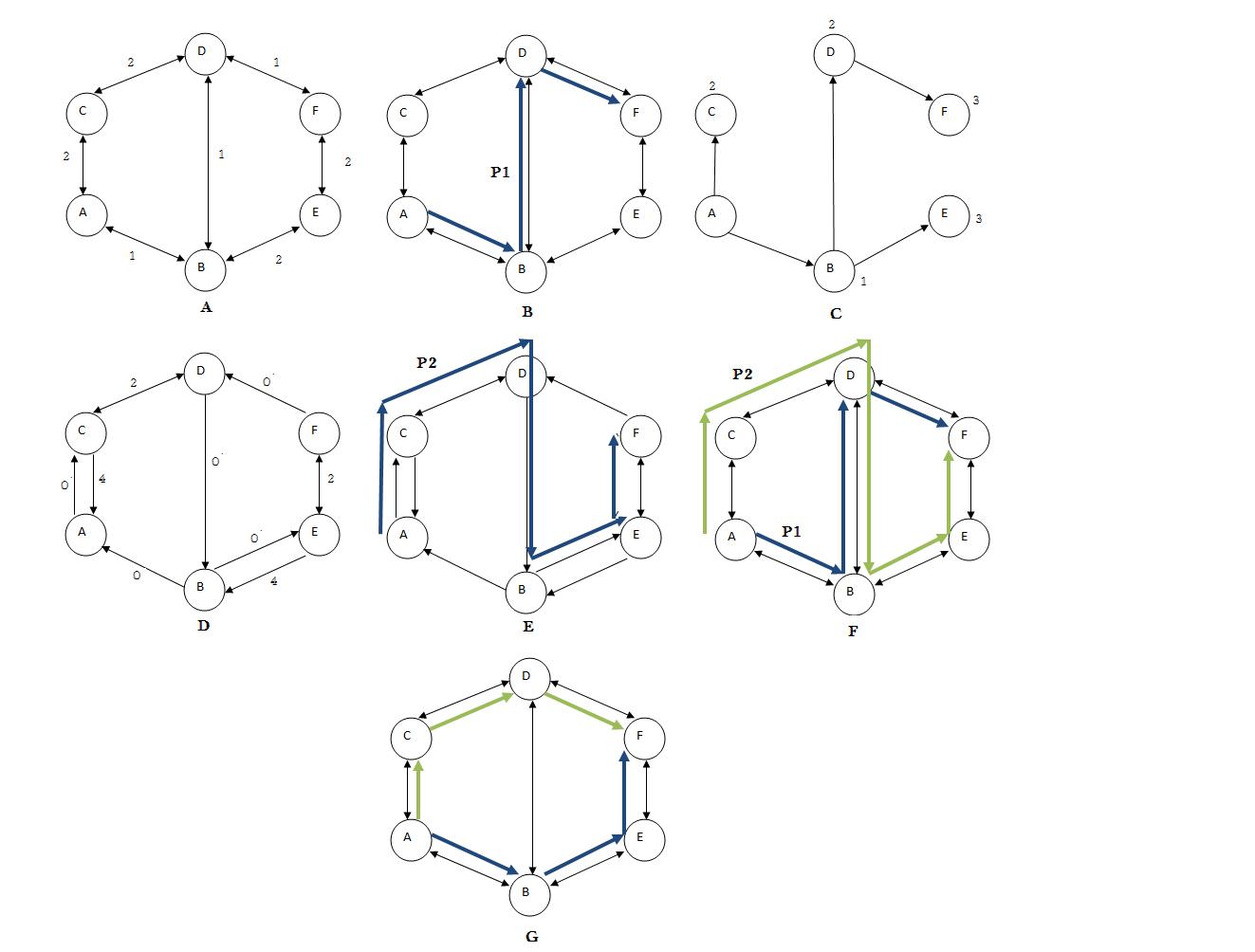Definitions
Grepresent a graphPrepresent a pathsrepresent source start vertexw(u, v)mean edge weight from vertexutovd(u, v)mean short path cost from vertexutov
Algorithm
- Find shortest path P1
- Recalculate the edge weith by
w′(u,v) = w(u,v) − d(s,v) + d(s,u) - Create a residual graph Gt formed from G by removing the edges of G on path P1 (leave a reserve zero path)
- Find the shortest path P2 in the residual graph Gt
- Discard the reversed edges of P2 from both paths
The remaining edges of P1 and P2 form a subgraph have no common edges.
Return the two disjoint paths from the subgraph.
Example

- Figure A illustrates a weighted graph G.
- Figure B calculates the shortest path P1 from A to F (A–B–D–F).
- Figure C illustrates the shortest path tree T rooted at A, and the computed distances from A to every vertex (u).
- Figure D shows the residual graph Gt with the updated cost of each edge and the edges of path ‘P1 reversed.
- Figure E calculates path P2 in the residual graph Gt (A–C–D–B–E–F).
- Figure F illustrates both path P1 and path P2.
- Figure G finds the shortest pair of disjoint paths
Combining the edges of paths P1 and P2 and then discarding the common reversed edges between both paths (B–D).
As a result, we get the two shortest pair of disjoint paths (A–B–E–F) and (A–C–D–F).